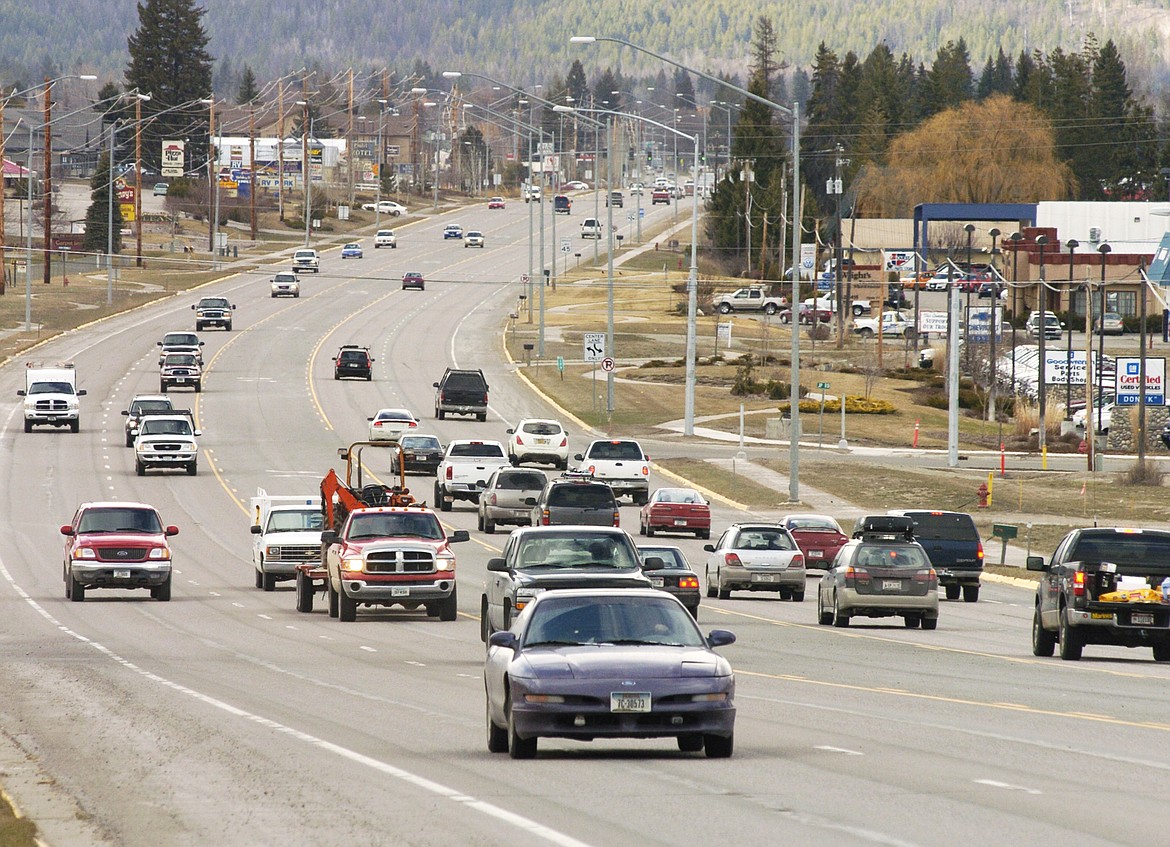Large buildings in business zone could see more review
Whitefish is considering requiring new large buildings and those involving hospitality uses or service stations in its secondary business zone to go through a conditional use permit review process.
City Council last week directed city staff to draft changes to its zoning regulations regarding CUP standards in the WB-2 zoning district that is intended for larger retail stores and services.
Mayor John Muhlfeld said the sooner the better for the potential changes to go through the Planning Board and return to Council for a public hearing.
“Regardless of use all buildings over 10,000 square feet need to require a conditional use permit,” he said. “All hotel and hospitality uses regardless of size should require a conditional use permit. We should also consider moving automotive service stations from the permitted category in the WB-2 to a conditional use.”
Council previously requested a review of options based upon its concern over the proliferation of hotels in the WB-2 zone and the potential impact of large building developments. Much of the property along the U.S. Highway 93 corridor from East Sixth Street south to Montana 40 is zoned WB-2.
Currently, only buildings 15,000 square feet or greater in the WB-2 require a CUP.
Planning Director Dave Taylor said by requiring buildings greater than 10,000 square feet to go through the conditional use permit process it would likely ensure review to a significant portion of new development in the WB-2.
“That would allow the City Council to better dictate how new development meets the goals and objectives of the city and any adopted long-range plans,” he said.
Some of the buildings with the largest square footage in the WB-2 zone includes The Wave at 43,482 square feet; Safeway at 52,578 feet; and the Pin and Cue at 20,924.
Taylor cautioned that requiring review of all buildings over 10,000 square feet could have pitfalls.
“Requiring most new commercial uses to go through a public process like a CUP can be an impediment to development and investment, creating uncertainty and time delays for construction projects and development,” he said.
In addition, Taylor points out that setting a 10,000 square foot limit might still not capture all new hotels. For example, the Cheap Sleep Motel at 10,431 square feet comes in just over the threshold, but the Chalet Motel at 7,104 square feet and the Stumptown Inn at 5,340 square feet fall below the level of what would trigger the need for a CUP.
Taylor said if the primary concern is with hotels and motels and their impacts — such as putting pressure on city services and taking up valuable commercial property that could be used for other uses — then hotels should be moved to a conditional use in the zone.
Hotels, motels and other hospitality uses currently are a permitted use in the WB-2 zone and only require architectural review and a building permit before construction.
In addition, automotive service stations and convenience stores are listed as a permitted use in the WB-2, but Council indicated that it would also like to see those types of uses moved to the conditional use list requiring a CUP for approval.
Councilor Richard Hildner agreed with the Mayor’s assessment saying given some of the development that is anticipated and the importance of the corridor that the city needs to be proactive in updating its zoning regulations.
Council’s request for a discussion on the mater came after recent approval of a subdivision on Highway 93 that included what appeared to be one lot designated for a hotel about 13,000 square feet in size.
Taylor said the proposed changes would go to the Planning Board in November, and then be forwarded to Council in December for a vote.


